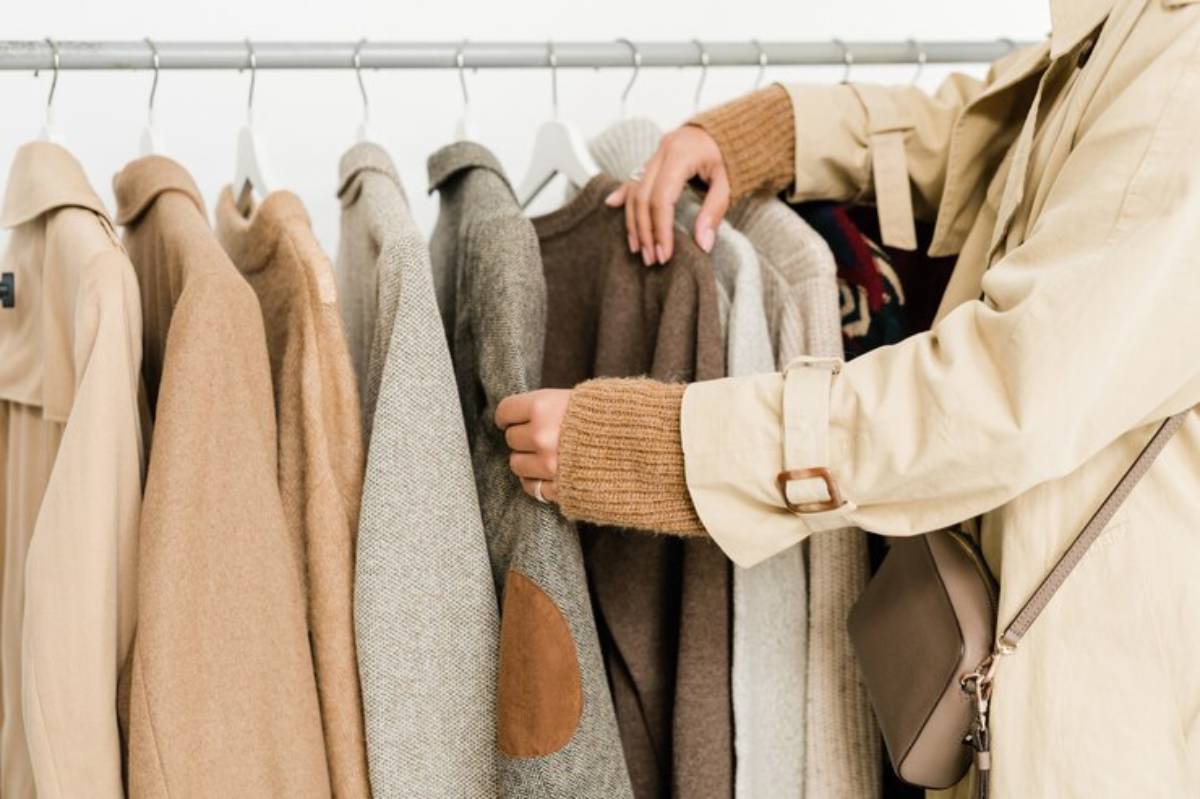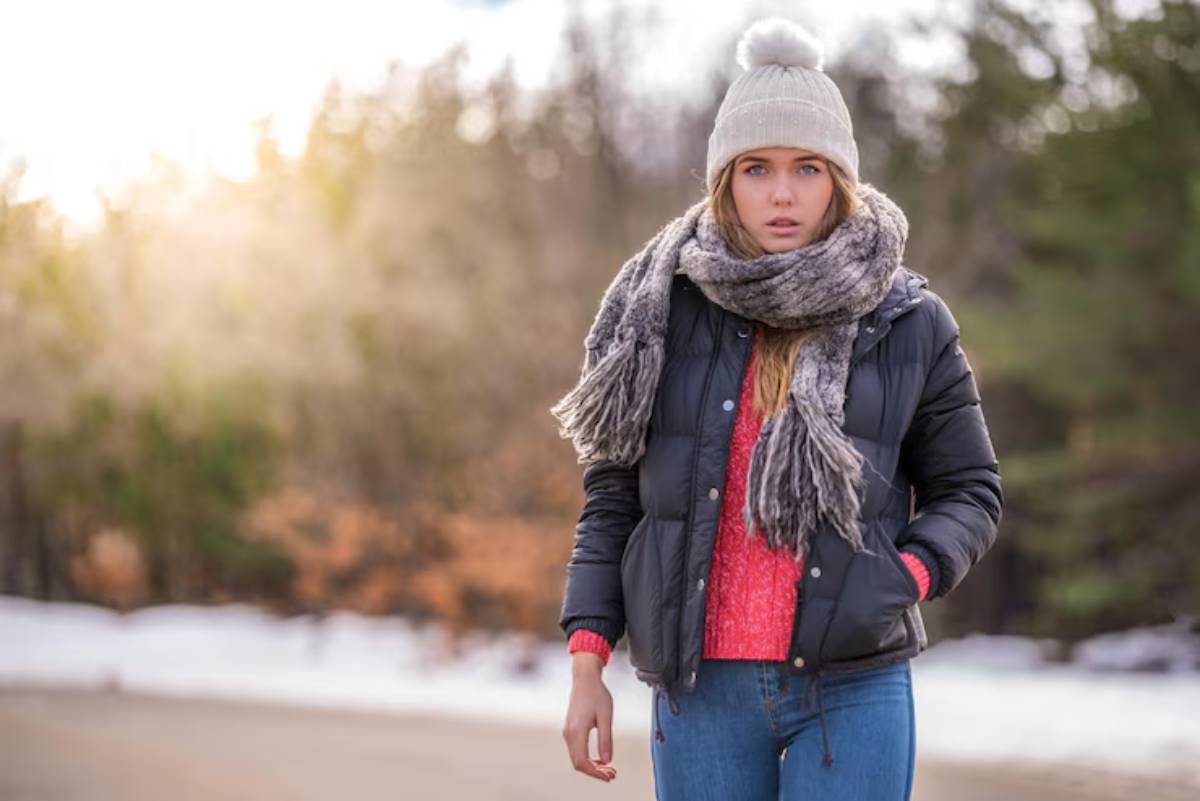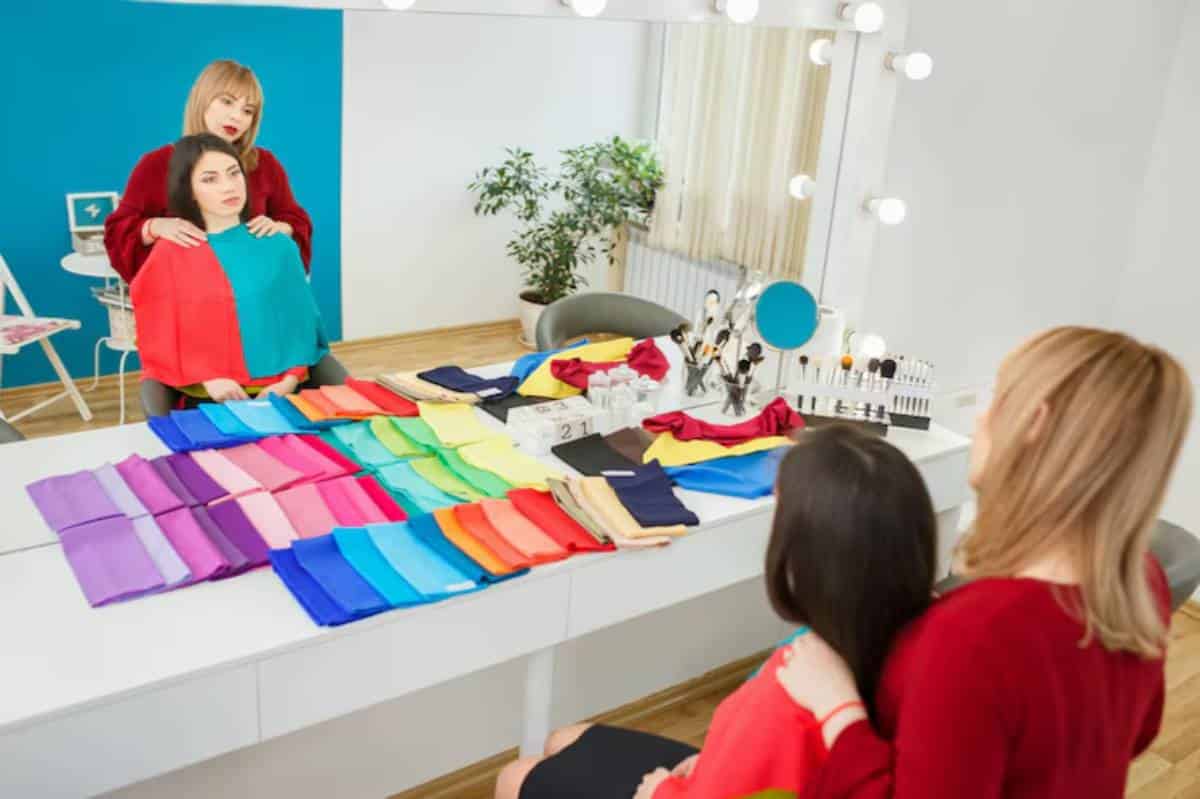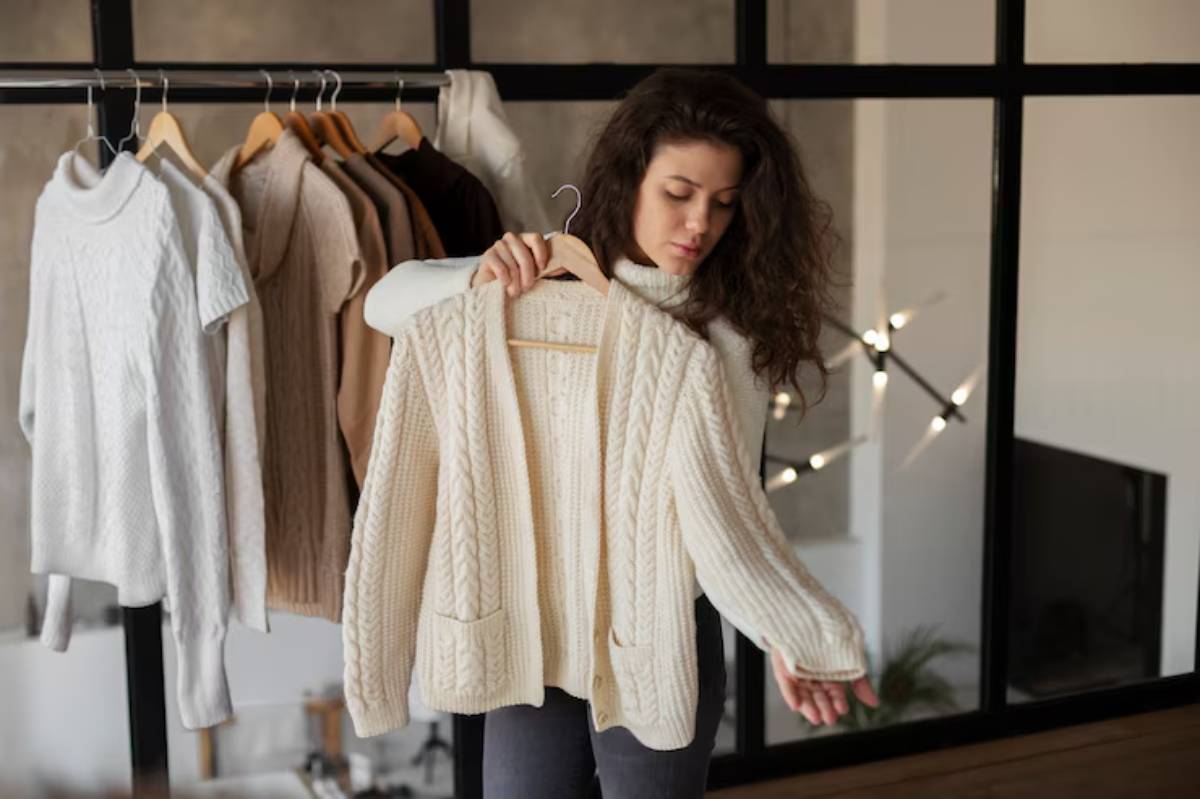
How to Transition Your Wardrobe from Winter to Spring: A Complete Seasonal Wardrobe Swap Guide
The Season of Change is Calling
As the frost fades and daylight stretches a little longer, our instinct to declutter and refresh kicks in—not just for our homes, but for our wardrobes too. Gone are the heavy coats, insulated boots, and endless layers. In their place? Breezier silhouettes, lighter fabrics, and fresh, uplifting tones that match the energy of spring.
Transitioning from winter to spring isn’t only about shifting clothing from one part of your closet to another. It’s an opportunity to reflect, reset, and get excited about getting dressed again. The swap from winter woollens to spring staples brings clarity, joy, and often, a renewed sense of personal style.
In this complete guide, you’ll learn how to approach the seasonal wardrobe transition mindfully and practically—from decluttering and cleaning to layering and colour refreshing. Whether you’re a minimalist building a capsule wardrobe or someone looking to breathe new life into your style, this guide will help you do it with ease and elegance.
Understanding the Core: Why Seasonal Wardrobe Swapping Matters
Why bother with a wardrobe swap at all? Isn’t it easier to just let everything hang in the same place?
Here’s the truth: keeping off-season clothing in rotation creates clutter—both visual and mental. When you’re wading through bulky knits to find a lightweight top, it slows you down and muddies your style choices. A seasonal wardrobe refresh gives your closet (and brain) space to breathe.
Benefits of a Seasonal Wardrobe Transition:
- Optimise space: Storing winterwear clears out room for lighter clothing you’ll actually wear.
- Protect your clothes: Properly stored garments last longer and stay in better condition.
- Save time: No more digging through irrelevant items each morning.
- Boost creativity: You’ll rediscover forgotten pieces and reimagine new outfit combinations.
A clear, curated wardrobe aligned with the season makes every day feel a bit more intentional. It’s a subtle but powerful form of self-care.
Quick Guide Summary: Key Takeaways at a Glance
- Declutter winter wear before storing it.
- Clean, repair, and properly store heavy garments.
- Reintroduce spring essentials like trench coats, loafers, and light knits.
- Embrace fresh, seasonal colours and fabrics.
- Layer smartly for fluctuating temperatures.
- Organise springwear where it’s visible and accessible.
Step-by-Step Guide: How to Practise a Seasonal Wardrobe Swap

1. Review and Declutter
Start by assessing every piece of winter clothing in your closet.
Ask yourself:
- Did I wear this at all this winter?
- Does it still fit and flatter me?
- Is it in good enough condition for next year?
Sort your items into 4 categories:
- Keep: Timeless winter coats, well-fitting knitwear, quality base layers.
- Donate: Items in good condition that you didn’t wear.
- Sell: Premium or designer pieces you’ve outgrown.
- Repair: Anything with minor damage worth fixing.
Pro Tip: Not sure about something? Create a “Maybe” box. Store it separately and revisit it in six months. If you didn’t miss it, it’s time to let go.
2. Clean and Store Winter Clothes Properly
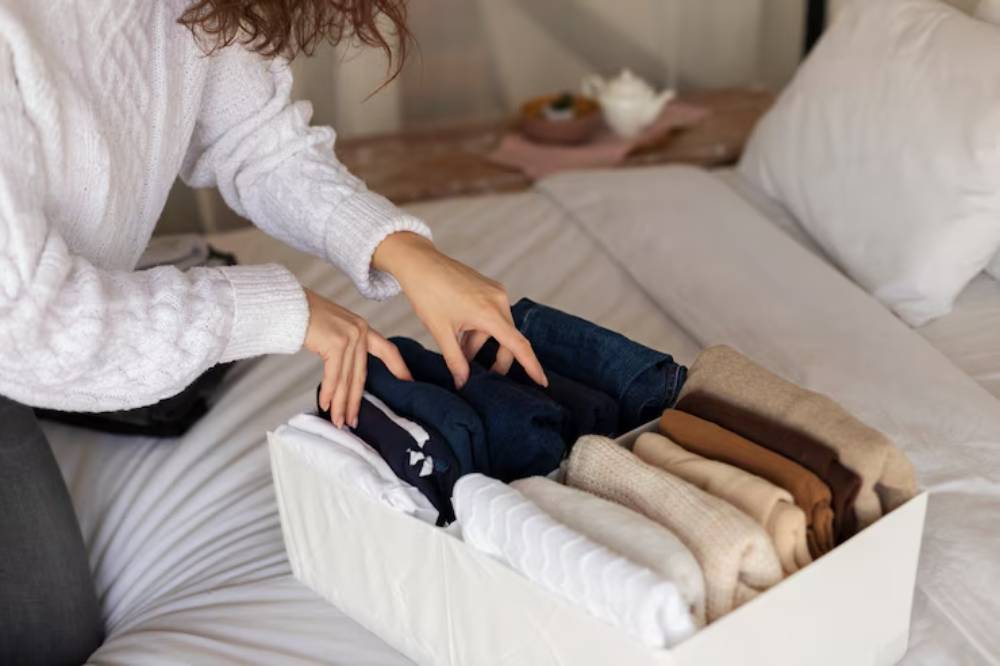
Before packing anything away, make sure everything is clean. Dirt, sweat, and even invisible body oils can set in during storage, attracting moths or causing fabric breakdown.
Cleaning Tips:
- Coats and woollens: Dry clean or steam-clean.
- Thermals and synthetic layers: Machine wash on a gentle cycle.
- Delicate items: Hand wash or use garment bags.
Smart Storage Methods:
- Use vacuum-sealed bags for bulky items.
- Choose breathable cotton boxes for wool and cashmere.
- Add natural moth repellents like cedarwood blocks or lavender sachets.
- Never store in plastic dry-cleaning bags—these trap moisture and invite mildew.
Take time here. It ensures your winter wear will be fresh and ready next year.
3. Take Inventory of Spring Staples
Now that you’ve made space, it’s time to reintroduce your spring wardrobe.
Lay everything out on your bed or a clean surface. This gives you a complete visual of what you have and what might be missing.
Spring Essentials to Look For:
- Light outerwear: Trench coats, macs, denim jackets
- Layering knits: Lightweight jumpers or cardigans
- Blouses and breathable tops: Cotton, linen, or viscose
- Spring trousers: Lighter fabrics, cropped cuts, chinos
- Footwear: Loafers, low boots, waterproof trainers
Ask yourself what worked well last spring—and what didn’t. Use this insight to plan intentional updates rather than impulse buys.
4. Layer Like a Pro

Spring can be warm one moment and brisk the next. That’s why smart layering is your best friend during the transition period.
Your Perfect Layering Formula:
- Base: Breathable T-shirt, tank top, or long-sleeve cotton top
- Mid-layer: Lightweight jumper or structured cardigan
- Outer layer: Windbreaker, trench, or denim jacket
Accessories like scarves, crossbody bags, and even wide-brim hats can elevate your outfit and offer functional weather protection.
Secret Tip: Keep a foldable umbrella and a neutral scarf in your day bag—both are spring essentials.
5. Embrace a Fresh Colour Palette
Winter wardrobes tend to be rich in neutrals and deep tones. Spring is the perfect time to experiment with softer and brighter hues.
Colour Refresh Ideas:
- Swap black and navy for ivory, blush pink, sage green, and cornflower blue.
- Integrate floral patterns, gingham, or pastel accessories.
- Try light-wash denim for a casual seasonal feel.
Even one colourful item—like a mint jumper or printed scarf—can shift your look instantly.
6. Reorganise Your Closet
Bring spring pieces to the forefront. This makes daily dressing intuitive and stress-free.
Closet Organisation Tips:
- Use matching hangers for a clean, cohesive look.
- Stack spring shoes within easy reach—consider clear boxes or a shoe rack.
- Store accessories like belts and scarves in drawer dividers or baskets.
- Hang lighter outerwear near your door for grab-and-go layering.
Important: Store winterwear out of sight to prevent visual overwhelm.
Common Pitfalls to Avoid
Do This
- Photograph your favourite outfits to see what works and repeat the success.
- Keep 1–2 winter staples (like a wool coat or jumper) handy for chilly days.
- Invest in transitional heroes: A neutral trench, a water-resistant shoe, or a light wool-blend jumper.
Avoid This
- Storing dirty clothes: This damages fabric and attracts pests.
- Making the full switch too soon: Spring weather is inconsistent—swap in stages.
- Overlooking accessories: Jewellery, scarves, and shoes are spring style game-changers.
Best Practices & Additional Insights
- Capsule Wardrobe Approach: Build a 25–30 item seasonal wardrobe of mix-and-match pieces.
- Rotate weekly: Move rarely worn items to the front of your closet for renewed use.
- Use a fashion app (like Smart Closet or Stylebook) to track your seasonal wardrobe and plan outfits ahead.
FAQs: What Readers Often Ask
How early should I start transitioning my wardrobe?
Start once daily highs reach 12–15°C consistently. Mid to late March is common in the UK, though it depends on where you live.
Should I keep a few jumpers out during spring?
Yes—stick with lighter knits or breathable fabrics that work for layering on cooler days.
What shoes are ideal for the winter-to-spring period?
Try loafers, Chelsea boots, or waterproof trainers. Avoid heavy winter boots unless there’s a cold snap.
Is it worth buying new spring items each year?
Only if there’s a gap in your wardrobe. Invest in quality pieces that are versatile and timeless.
Conclusion: Step into Spring with Style and Confidence
Transitioning your wardrobe isn’t just about clothes—it’s a mindset shift. As you store away the heavy and embrace the light, you’re welcoming in a fresh season with confidence and clarity.
By planning your swap, protecting your clothes, and curating spring-ready pieces that you truly love, you’ll create a wardrobe that not only suits the season but uplifts your entire daily routine.
Ready to begin? Download our printable spring wardrobe checklist and take the guesswork out of your seasonal swap.
Visit our seasonal style transition hub for more tips and inspiration!
